Investors are looking at dividends as reliable sources of earnings in a market dominated by negative sentiments. But is it possible to live off dividends, and if so, how much will one need to put into them? We look at these questions and provide the answers below.
About Dividends
A company can choose to distribute a part of its earnings to shareholders. These income distributions are called dividends.
The firm’s Board of Directors is the one who decides to pay them out. Typically, dividends are paid out quarterly, and the mode of payment is usually cash.

However, the business may offer shareholders the option to reinvest money in their stocks instead. Dividend payouts are measured in terms of yield, which we will explain in the following sections.
A higher yield implies a better payout and vice versa. All common shareholders are eligible for dividends as long as they own the security before their payout date.
Usually, mature firms pay out dividends, whereas newer companies prefer to reinvest the money. Sectors such as consumer staples, utilities, telecom, and healthcare are best for dividend income.
We will cover them in greater detail later on. Investors should know that the stock market is not the only place to get dividends.
Real estate investment trusts (REITs), business development companies (BDCs), and master limited partnerships (MLPs) usually offer higher dividends than securities.
However, the investor is also liable to pay taxes at a higher rate for dividend income from these other sources.
Lastly, dividends are traditionally seen as a form of passive income that adds value to stock holdings, apart from capital appreciation. However, opinions about dividend payments are changing as fears of a slowdown are gaining ground in the markets.
What Is a Dividend Yield?
The dividend yield is the amount a company pays to shareholders for owning its securities. It is expressed as a percentage of the share price.
In mathematical terms, the yield is a stock’s annual dividend rate per share divided by the share price. The inverse of this term is known as a dividend payout ratio.
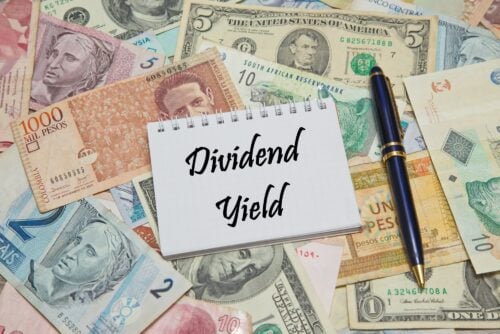
Note that yields are not always indicative of the strength of a security or asset.
Sometimes, higher dividend payouts can also result from declining share prices.
We will discuss what “high” dividend income means, how much you need to invest in building it, and whether you can retire on it as we go along.
What’s a Good Dividend Yield?
About 2% to 3% can be considered a realistic dividend yield, and 4% is considered good. Some firms can do even better. About 6% would be the highest one can hope for.
Such high yields are a sign that a business has reached a certain level of maturity. It can generate the required cash to regularly pay its shareholders without external borrowing or compromising growth.
Usually, blue chip firms are the only ones who can offer such yields. It’s also necessary to note that dividend growth happens over time. Firms tend to increase their payout yield as they mature.
Related: Do Value Stocks Have High Dividends?
How to Calculate Yield?
As mentioned earlier: Dividend Yield = Annual dividend per share / Current price per share.
Let us share an example.
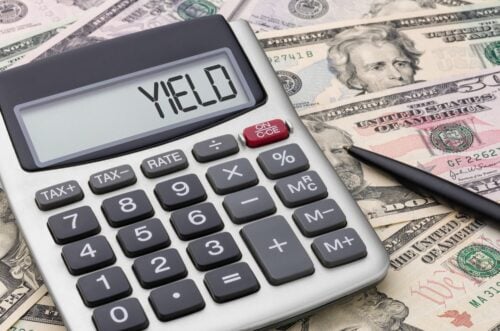
If you own one share of a firm XYZ that offers a $2 dividend per quarter, that’s a total of $8 over the year.
If the current stock price of XYZ is $320, then the dividend yield = $8 / $320 = 0.025. In percentage terms, this makes it a 2.5% yield.
How Much to Invest to Live off Dividends?
The median household income in the US in 2021 was $70,784.
To live purely off dividends, you need to make at least this much money. We discussed earlier that 2% to 4% is the average dividend yield a shareholder might aim for.
Let’s take the bottom and top rung of this bracket to see how big an investment portfolio would be needed. At a 2% dividend yield, the money required to be put in is $70,784 / 2% = $3.54 million.
Assuming 4% instead, the investment level is $70,784 / 4% = $1.77 million. In either case, that’s a large amount of money!
How Much Do You Have to Invest to Make 1,000 a Month in Dividends?
A $1,000 a month equates to $12,000 in annual dividend income.
Let’s use the same method as the previous section to understand what amount must be invested to earn this much.
At a two percent yield, $12,000 / 2% = $600,000. But for a four percent return, only half ($300,000) would be necessary. Still, it is a fairly big investment to get a $1,000 monthly return.
Can You Live off Dividends of 1 Million Dollars?
Assuming again that the yield would be somewhere between 2% and 4%, we get these results: At 2% yield, dividend income = $1 million x 2% = $20,000 per year. For 4%, it doubles to $40,000 annually.
While this seems like a good sum of money, remember that the household income of the average American family is upwards of $70,000.
Even if we assume this is a retirement portfolio, and therefore their annual spending may be about 25% lower, the amount needed is still above $53,000.
Moreover, dividend payouts are taxable income. Depending on the applicable rate, the taxman will also take a portion of the $40,000.
Hence, some additional sources of funds are still necessary. In the case of retirees, a part of this might come from social security and pension income.
But for the rest, even a million dollars may not be enough to live off dividends.
Related: 5 Dividend Stocks to Buy Now
How Much Does Warren Buffett Make in Dividends?
Berkshire Hathaway, Warren Buffet’s company, will likely rake in close to $6 billion in dividends during the next 12 months.
Three big stocks will make up nearly half of this money:
- Chevron: $964 million
- Occidental Petroleum: $901 million
- Bank of America: $909 million

Chevron currently offers an industry-leading 3.4% dividend yield.
Berkshire Hathaway indirectly owns nearly $5.9 billion worth of shares through a subsidiary, New England Asset Management.
Their holdings in Occidental petroleum are worth $194 million in open market stocks and about $10 billion in preferred shares.
The dividends on the preferred securities (8%) drive the company’s income here.
Lastly, Bank of America also has an average dividend yield of 2.56%, and Berkshire Hathaway holds $1.03 billion of bank shares.
How Much Do I Need to Invest to Make $300 a Month?
A $300 per month dividend income translates to $3,600 a year. Let’s plug this amount into the 2% and 4% yield models we used earlier.
For 2%, the sum needed would be = $3,600 / 2% = $18,000 If instead, it was 4%, only $9,000 would be needed to earn this much.
How Much Dividend Is Considered High?
A 4% or higher yield is considered relatively high. As we said earlier, 6% is one of the highest dividend yields that investors can hope for.
However, any stock that offers such yields should be carefully examined before investing.
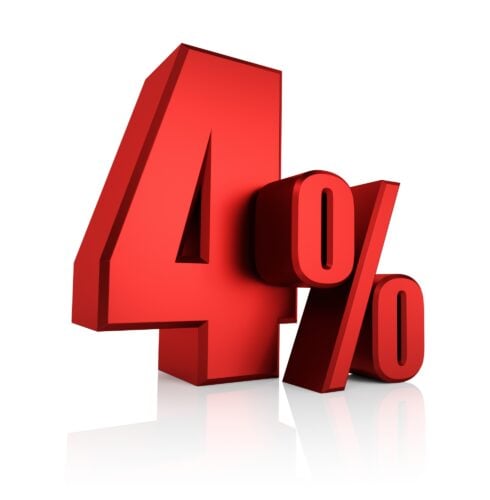
The higher yield % is often driven by a fall in stock prices rather than exceptionally high payouts. This would be a surefire sign that the company isn’t doing well.
Moreover, it is possible that the payouts are not stable – they might be high right now but will fall in the next quarter or year.
Can You Retire on Dividend Stocks?
A retirement portfolio of about $1 million in high dividend-paying stocks should generate enough money to live comfortably.
At a consistent 4% yield, $1 million put into such shares can generate about $40,000 per year.
This amount may not be enough to cover all post-retirement expenses, but with social security, pension, and some prudent spending, it should be enough.
However, the larger question is whether retiring on a dividend investing strategy is good. For one thing, a dividend stock is usually also a value stock.
This means the underlying company will likely be stable and have steady incomes. This is important because it ensures that the dividend flow will be more regular than other sources of investment income.
Macroeconomic factors like the inflation rate or other economic policy decisions won’t impact it. For those looking to finance their living expenses from dividends, this is a crucial factor.
Secondly, it is possible to get diversification and lower taxes by investing in dividend-focused exchange-traded funds. These instruments offer qualified dividends that are taxed at capital gains rates. This lowers the investor’s tax outgo.
However, it should also be noted that dividend stocks are high-priced ones. This is because the lure of steady income inflates the price of these shares.
We already saw that the capital needed to earn a good income from dividends is relatively high. It takes a million dollars just to make a $40,000 income, even at the highest yield of 4%.
Moreover, value stocks are not sectors that are likely to see high growth. Hence the possibility of capital appreciation is also limited.
Lastly, whether to depend on dividend income is also a factor of the investor’s risk-taking ability. After all, less risky alternatives like bonds and fixed-income assets are also available in the market.
Best Sectors for Dividends
Traditionally, sectors with a regular income stream from a stable, mature industry are the best places to look for quality dividend stocks.
Telecom and utilities, for example, are high dividend payers.
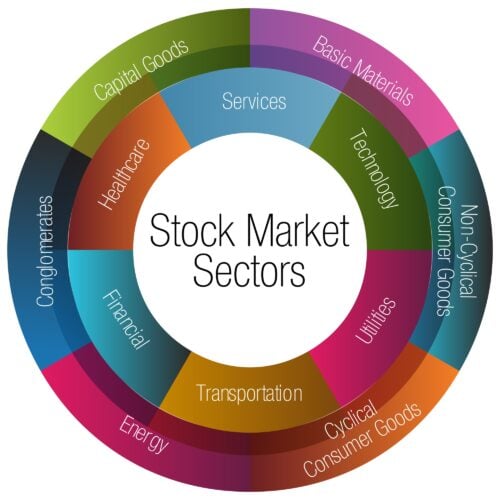
In recent years, however, even non-traditional businesses such as IT have started giving high yields. Let’s look at four of the best options for dividend investing.
Utilities
Utilities include electric, gas, and water industries. All of them offer high dividends, but the price growth on the shares is not very high.
On the flip side, this also means that they perform well, no matter how the economy performs. Currently, utilities are offering a 3.59% dividend yield on the S&P 500, which is one of the best.
Telecom
Telecom is another sector that does not move with the ups and downs of the economy. Consumers are unlikely to stop using their phones just because the share market is down.
Telecommunication firms, therefore, have stable earnings, some of which naturally flow into dividend payouts. In fact, the average dividend yield of this sector is 4.67% on the S&P 500, which is among the highest across industries.
Consumer Staples
Consumer staples include firms that produce household goods, cleaning products, and food and beverages.

Again, this sector is characterized by steady incomes and currently has an average dividend yield of 2.62%.
Healthcare
Healthcare has a wide variety of players and segments. The areas offering the highest yields are drug manufacturers, who have steady, long-term incomes.
Overall, healthcare offers about a 1.53% yield, but it is this segment that dividend investors should target.
Final Thoughts
It takes at least an investment of $1 million to live off dividends.We looked at this calculation for a retiree household that can supplement these earnings with pension and social security.
Average dividend yields range from 2% to 4%, which is why the investment levels required are so high. While there are options that can offer better than this, investors need to be careful of such products.
They might just have high yields because their underlying companies are not doing well. Typical high dividend sectors include utilities, telecom, healthcare, and staples.
These are all value industries with steady cash flows. This is why dividend income is a stable option, especially for those looking to retire on it.
However, it also implies that there is little scope for value appreciation in these stocks. Moreover, safer options such as bonds and fixed-income assets are available for those who are very risk-averse.
Aiming to live off dividends is a personal choice that depends on how risk-averse the investor is.

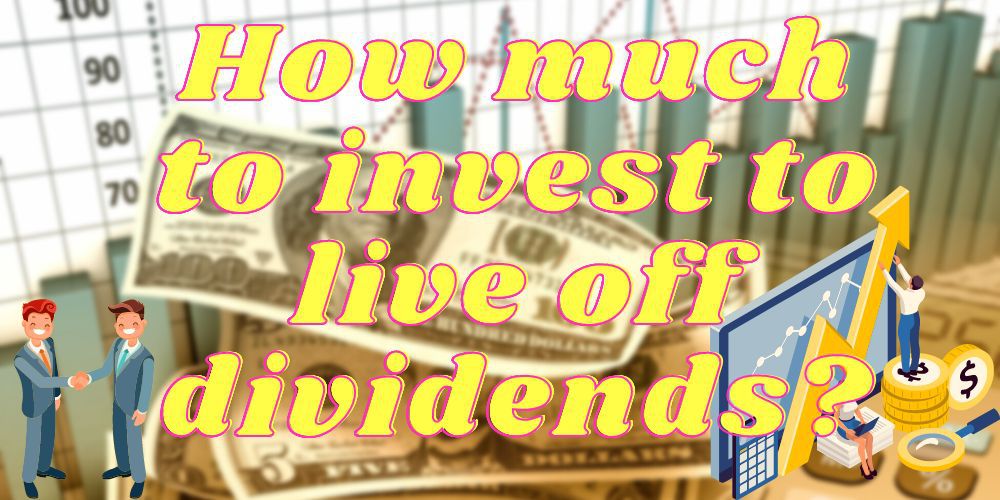
 Tags:
Tags:










